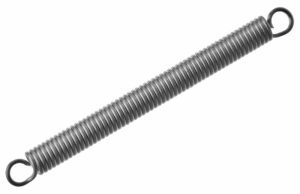
Most springs are made of metal, but some of them are made of different types of metal than others. There are stainless steel springs, and there are music wire springs. Both stainless steel and music wire springs are capable of storing energy under a load, but they are made of different types of metals.
What Are Stainless Steel Springs?
Stainless steel springs are energy-storing devices that feature a stainless steel construction. They are made of stainless steel, which is an iron alloy with a chromium content of at least 11%.
You can find extension and compression springs in stainless steel. Extension springs become longer under a load, whereas compression springs become shorter under a loan. Stainless steel is used to make both extension and compression springs.
What Are Music Wire Springs?
Music wire springs are energy-storing devices that feature a music wire construction. Also known as piano wire, music wire is a type of high-carbon steel. It’s commonly used in musical instruments, such as pianos.
Music wire is made by stretching high-carbon steel. It’s then used in musical instruments, springs or other products that require a spring.
Differences Between Stainless Steel and Music Wire Springs
Music wire springs may look like stainless steel springs, but they contain a different type of steel in their construction. Stainless steel and music wire are both iron alloys. The latter, however, contains a higher concentration of chromium, resulting in higher tensile strength.
Music wire springs have a higher tensile strength than stainless steel springs. This means they can withstand more force and repeated stress and strain without permanent deformation.
You don’t have to worry about breaking music springs, either. Thanks to their high tensile strength, they can handle bends. This is one of the reasons why music wire is commonly used in musical instruments. Musicians can bend music wire-based strings without snapping or breaking them.
Stainless steel springs, on the other hand, are better protected against corrosion. Stainless steel contains chromium, which acts as a shield for the underlying iron. The chromium in it will react with the oxygen in the surrounding air. This chemical reaction, known as oxidation, will result in the formation of an invisible and protective barrier over the surface of stainless steel.
Stainless steel springs can also withstand more heat than music wire springs. Music wire springs may warp when exposed to hot temperatures. For high-temperature applications, stainless steel springs are the way to go.
